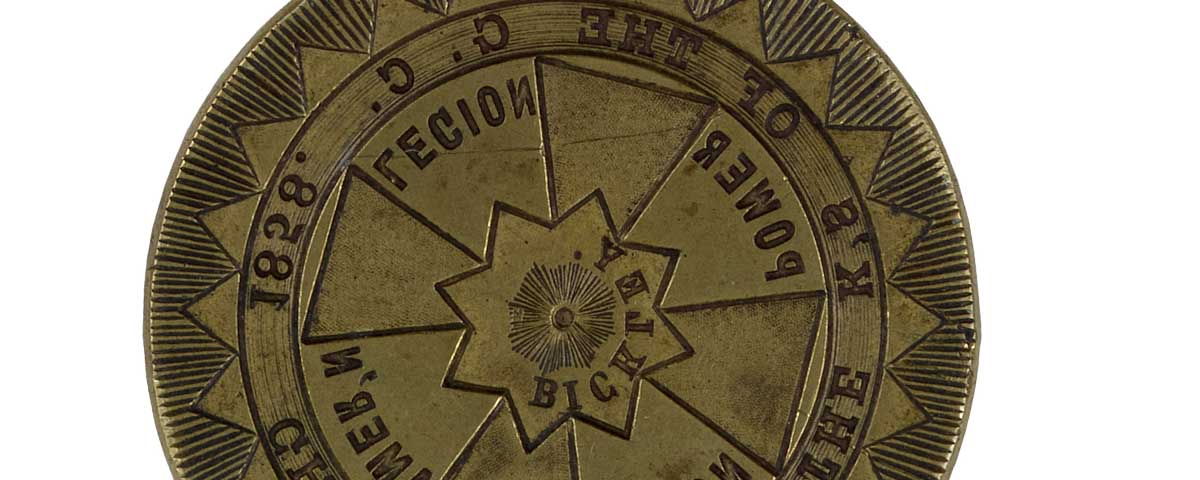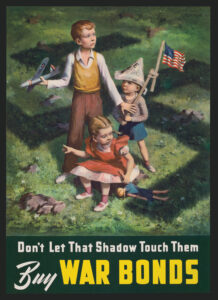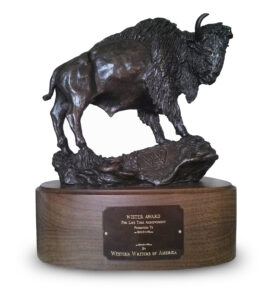“This war ain’t over. Hit just started good.”
With that observation, former slave Ringo—a character in William Faulkner’s novel The Unvanquished—sums up the view of many, North and South, after direct hostilities of the Civil War had ended.
In the new postwar Southern world, the political, economic and social landscape had changed forever. Deep bitterness and frustration followed on both sides and, some have argued, the war continued in what was simply a different theater.
It was one of oaths, secret signs, passwords, rituals, threats and violence, operating outside the authority of an established government that was discounted in the South as an invader, anyway. Secret societies in the South sought to reverse the tide of change by any means necessary.
POLITICAL FACTIONS IN THE NORTH had clamored for a more punitive handling of the defeated South than the moderate approach of President Abraham Lincoln and, after his assassination, President Andrew Johnson. Passed over Johnson’s veto, the Civil Rights Act of 1866 had granted citizenship and the same rights enjoyed by white male citizens to all male persons in the United States “without distinction of race or color, or previous condition of slavery or involuntary servitude.”
With their victory in the 1866 mid-term elections, Radical Republicans in Congress further assumed responsibility for Reconstruction, effectively placing the entire South under military rule. Various Freedmen’s Bureau bills had extended full legal protections to former slaves, including rights to hold and inherit property, and establishing free schools for black children, all backed up with military supervision to ensure those new rights. By spring 1867, Congress had passed several additional Reconstruction acts that were an anathema to the South, including the registration of freedmen to vote.
Out of all the elements of a forcibly reordered Southern society, it was the altered status of freedmen that rubbed many in the South the most raw. While emancipation may have been tolerated (indeed, some planters welcomed the passing of the slaveholding system), the elevation of former slaves to a position equal to whites could not be imagined—let alone tolerated. As George Washington Cable pointed out in his 1890 The Negro Question, “Emancipation had destroyed private, but it had not disturbed public, subjugation. The ex-slave was not a free man; he was only a free Negro.”
And that free Negro was now in competition with lower-strata Southern whites for their very livelihoods, wages and land. Worse yet from the Southerner’s perspective, that same freedman had joined with carpetbaggers and scalawags in an unholy trinity, allied with Republicans rather than Democrats to further the ends of the war’s victors.
When coercion or intimidation of African Americans did not work to restore conservative Democratic power and relegate blacks to their previous place in Southern society, violence and terror became the tools Southern secret societies used to effect political control.
Secret fraternal societies had been part of the American experience since Colonial times, inherited from European counterparts. Freemasons were the most famous of these fraternal groups and famously counted among their members many of the Founding Fathers: George Washington, Benjamin Franklin, James Monroe and John Hancock, among others. Despite occasional conspiracy theories and general public suspicion to the contrary, these were not violent groups.
Nor were secret societies the exclusive purview of whites. Black fraternal clubs also existed, but tended to take the form of mutual aid societies like the antebellum Grand United Order of Odd Fellows, made up of free blacks. All but disbanded during the war years, the Odd Fellows did enjoy resurgence after the war and Reconstruction, establishing lodges in the South and in the West. The African-American Prince Hall Masons, however, stand out among the black secret societies for taking their activities well beyond those of a mutual aid society into the realm of civil disobedience by aiding travelers on the Underground Railroad.
But white groups affected Southern society more directly.
WHILE THE KNIGHTS OF THE GOLDEN CIRCLE’S heyday was largely before the Civil War—most of their members were off fighting once the war began—the roles certain members played in its postwar incarnation made the group significant in this new theater of conflict as well.
Founded in the 1850s by George Washington Lafayette Bickley in Cincinnati, the Knights of the Golden Circle’s initial main purpose was to advance the interests of George Bickley. A dedicated con man, he left a long string of failed ventures in his wake. He used fake whiskers and disguises in his attempts to hide from angry creditors, and his claim to hold a medical degree was unsubstantiated. One of the most telling aspects of KGC recruitment was the membership levels available—$1, $5 and $10, payable to the “President General of the American Legion,” aka George Bickley, writes Mark A. Lause in A Secret Society History of the Civil War.
Marketing the KGC to his target audience of affluent Southerners, Bickley established his group as pro-South and pro-slavery, and grounds for denying membership included being a “drunkard, professional gambler, rowdy, convict, felon, abolitionist, negro, Indian, minor, idiot or foreigner.” In addition, he touted a convenient interpretation of Christianity, particularly recognizing the special role he claimed the Lord had conferred on Anglo-Saxon and presumably Southern males, and fervent anti- Catholicism. KGC clubs were referred to as “castles,” for reasons best known to Bickley.
Before the war, the KGC evolved into a quasi-military organization with filibustering fantasies of annexing an area from Mexico, Central and South America to Cuba and the Caribbean: the “golden circle” from which 25 individual slave states would be established. Despite occasional skirmishes along the Mexican border, the KGC’s efforts to claim Mexico came to naught—usually when some expected great force of reinforcements failed to appear. The group was always strongest in Texas, where Gov. Sam Houston was rumored to be a member, at least early on.
During the war, KGC members were on hand during the 1861 takeover of the New Mexico Territory under Confederate Col. John Baylor as well as the 1862 New Mexico Campaign under Confederate Brig. Gen. Henry Hopkins Sibley. Neither adventure resulted in Confed- erates holding those areas for any significant length of time.
Bickley was a master at using the press to suggest that the KGC was far larger and more influential than it was, planting stories in newspapers in the North and South with exaggerated claims of membership numbers and activities. For that reason alone, the biggest impact of the Knights of the Golden Circle was in the fear it produced in the North. Radical Republicans accused notable Copperheads of being members—including former President Franklin Pierce, who angrily denied the accusation when Secretary of State William H. Seward informed him of an anonymous letter that implicated him. The letter proved to be a hoax, but when it became public anyway, the pair’s correspondence on the matter was published, to Seward’s embarrassment.
After a brief stint serving as a surgeon in the Confederate Army, Bickley was captured in 1863 and incarcerated by Union troops, who confiscated a trunk of documents that would, it was supposed, indict legions of KGC members in the North. But it did not. Rather than exposing Northern sympathizers, the trunk’s contents merely exposed Bickley.
The KGC reorganized as the Order of American Knights later in 1863, and again in 1864 as the Order of the Sons of Liberty, with prominent Copperhead and former Ohio Congressman Clement L. Vallandigham as its head. This is the same Vallandigham, it might be remembered, that President Lincoln in 1863 deported to South Carolina as an enemy alien after Vallandigham was convicted of publicly sympathizing with the Confederacy.
Interestingly, John Wilkes Booth and some fellow conspirators, along with outlaw Jesse James, also were members of the KGC.
WHILE THE ACTIVITIES of the KGC might have fanned post-war flames, two other Southern secret societies employed outright terror and violence to stoke the fire. Both the Ku Klux Klan and the Knights of the White Camellia resolved to reverse the changes imposed on the South and return Southern society to its prewar order, especially when it came to white supremacy.
The beginnings of the Ku Klux Klan were fairly innocuous, especially when compared to what the organization became. The exact date the group was founded is unclear—like much about its beginnings—but it probably occurred in the summer of 1866. Tradition holds that the group was founded in Pulaski, Tenn., with the organizational meeting taking place in the law office of Judge Thomas M. Jones, whose son was one of the six young Confederate veteran founders. Those early members later maintained they started the group out of boredom after returning to small-town Pulaski after the war, and that playing pranks on one another was more the order of those early days.
The name came from combining the Greek word kyklos, meaning circle or band, with clan as “Klan.” With a name borrowed from the classics, and rituals and designations for officers (“Grand Cyclops,” “Grand Magi” and the like) derived from collegiate fraternities, the group traces its origins to the more affluent members of Southern society.
But within a year, what started as a small-town social club had become a vigilante outfit. Pulaski was in the midst of a crime wave, mainly property crimes like robbery or burglary, that white citizens attributed to freedmen. KKK members began to use intimidation to disarm freedmen, donning costumes and invading black homes at night, ostensibly for public safety.
The movement snowballed from there, to the point where even the founders were alarmed. An anonymous letter purporting to be from one of the original six opined in May 1868 in the Pulaski Citizen that:
“It is to be lamented that the simple object of the original Ku-Kluxes should be so perverted as to become political and pernicious in its demonstrations. If it has become a regular organization, with a guerrilla and “lynch-law” attributes, then better the Ku Klux had never been heard of and the sooner such organization is dissolved the better for the country at large—especially for the South.”
But it was too late. By late 1867, Southern anger and frustration at Reconstruction measures roiled, particularly over the disenfranchisement of former Confederates while freedmen could now vote, and the subsequent effect on local, state and national congressional elections. Those resentments fueled a shadow war against what a Louisiana newspaper called “northern emissaries of advanced political ideas.” That meant all Northerners and their perceived cohorts, black voters.
Earlier efforts had been made to encourage black voters to vote Democratic, including issuing handsome certificates to those who voted the Democratic ticket, or “protection papers,” in some parts of the South. And white landlords and employers wielded significant economic clout through firings and eviction. But these more peaceful, albeit coercive, means were now in large part over.
“The Klan became in effect a terrorist arm of the Democratic party, whether the party leaders as a whole liked it or not,” Allen W. Trelease noted in his 1979 book White Terror: The Ku Klux Klan Conspiracy and Southern Reconstruction.
It is not clear what more moderate Southerners thought as Klan membership spread across the South and truly horrifying stories of “outrages”—beatings, lynchings, assassinations, rape and destruction of property—became widely known. Was there tacit approval in the silence, or fear of violent retaliation toward themselves and their families?
The numbers involved either in Klan membership or those harmed by its violence are impossible to determine, although many historians have suggested the actual numbers of deaths and injuries are many times greater than the thousands known.
The Klan was never a centralized organization, and Klan dens reflected their locales; some areas were more violent than others. The makeup also evolved from those first upper-class, educated founders to a wider swath of the white populace, ranging from disgruntled lower-class white farmers and working men to disaffected Confederates to people holding private grudges and old animosities. Above all, members were united in an abiding belief in the supremacy of the white race and the desire to rid the South of Northern invaders, especially Republicans.
Many sources say former Confederate Lt. Gen. Nathan Bedford Forrest became the KKK’s Grand Wizard in 1867. But when he testified to Congress about the Klan in 1871, he at best minimized his involvement or at worst denied membership—though others reported seeing him in 1867, in full Klan regalia, night-riding to scare off potential Republican voters. He claimed, however, that the Klan’s aims were nonviolent and merely political, aimed at protecting the Southern white society from the so-called Loyal Leagues—men’s clubs dedicated to the Union, Radical Reconstruction policies and the Republican Party. The subjugation of blacks in the South was presumably incidental to this view.
After Gen. Ulysses S. Grant decisively won the presidential election of 1868—the first in which African Americans could participate—Klan activity began to decline and dens disbanded. Even Forrest called for dissolving the Klan, claiming in 1869 that it was “being perverted from its original honorable and patriotic purposes, becoming injurious instead of subservient to the public peace.”
Though it died out later in Reconstruction, the KKK has seen two resurgent periods in U.S. history: between the 1920s and 1940s as a response to large numbers of immigrants coming into the South and spreading through the West and Midwest, and again in the 1950s and 1960s, principally in the South, during the civil rights movement.
THE KNIGHTS OF THE White Camellia, founded in 1867 by a Louisianan and former Confederate colonel with the marvelous name of Jean Maximilien Alcibiades Derneville DeBlanc, derived from sentiments similar to the KKK’s: devotion to white supremacy and vehement opposition to Reconstruction policies. Its members, however, were drawn from higher social classes, including doctors, lawyers and other professionals, as well as many public figures. The Knights of the White Camellia might be considered a sort of “Klan-Lite.” Operating mostly in the Deep South, KWC members did not attempt to keep their membership secret, freely acknowledging participation; nor did they dress up as did the Klan. They did employ rituals, oaths and the like, but used more conventional terms for officers: commander, lieutenant commander, secretary and treasurer, for example.
They might have been more numerous than the Klan and were comparatively less violent—though, make no mistake, they did not hesitate to use beatings or threats of physical harm, including death, to prevent freedmen from voting Republican. They were, however, considered too tame for some who left the group.
The Knights of the White Camellia was also relatively short-lived, disbanding in 1869 after a Republican newspaper exposed its core secrets, including passwords, signals and rituals. Some members joined the KKK or groups that developed later, such as the White League.
Other secret societies were smaller and geographically specific, such as the Knights of the Rising Sun in Texas, the Knights of the White Carnation and the Knights of the Black Cross in Alabama, and the Young Men’s Democratic Clubs of Florida. The groups were more or less similar in goals, but the degree of violence used varied from group to group.
REPORTS OF RAMPANT MURDER and almost incomprehensible brutality by these secret societies horrified the rest of the country, resulting in a backlash as the federal government moved to restrain them. A federal grand jury deemed the Klan a “terrorist organization” in 1870, and in 1871 the federal Third Force Act, known as the “Ku Klux Klan Act,” effectively outlawed such groups. As a result, nine South Carolina counties were placed under martial law and thousands of arrests were made throughout the South.
The Supreme Court overruled the Ku Klux Klan Act in 1882, holding in The United States v. Harris that the law was unconstitutional. By that time, however, Reconstruction had ended under President Rutherford B. Hayes. Hayes, it was popularly held, had gained the presidency through his appeasement of the South by removing federal troops and disenfranchising blacks—the so-called “Corrupt Bargain” (also called the Compromise of 1877). By then, Americans were simply tired of the decades-long conflict.
There is a perhaps tired truism about losing the battle but winning the war. While activities of secret societies did not achieve the short-term goals of preventing Republican candidates from winning state and local offices in the years immediately after the war or stopping African- American voters from helping elect a Republican president in 1868, they did effectively shut African Americans out of full participation in elections for decades. They established a pattern in the South of repressing black voters that continued through the Jim Crow years and the civil rights battles of the 1960s.
Beth Rowland, owner of Black Walnut Corner Book Production, writes Field Notes for America’s Civil War along with her husband Tim.





